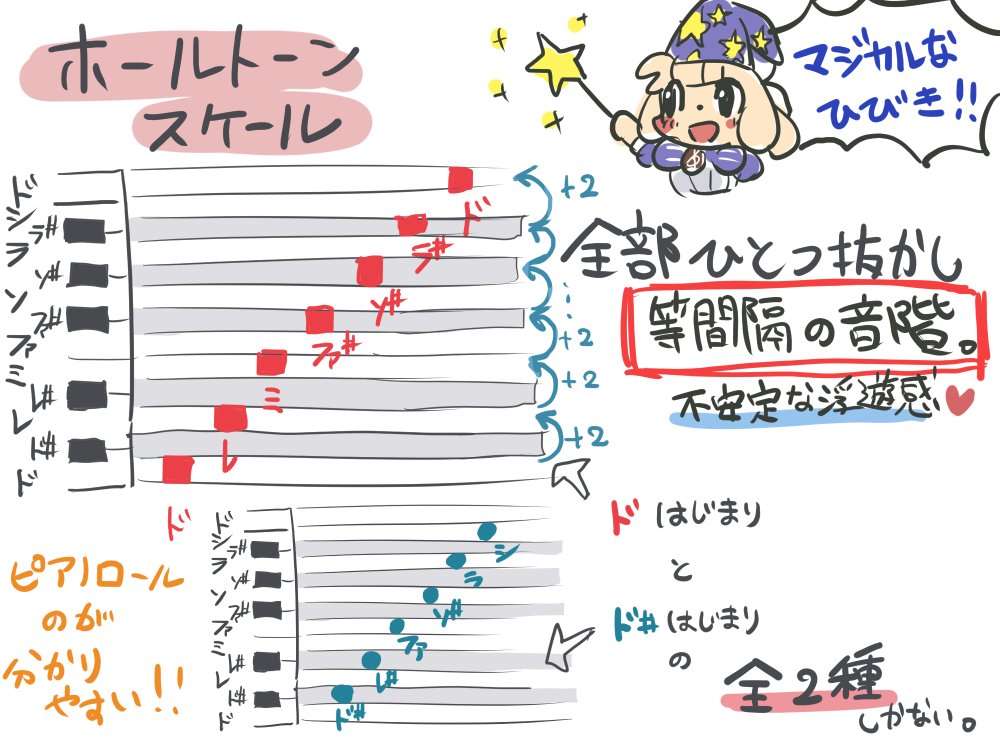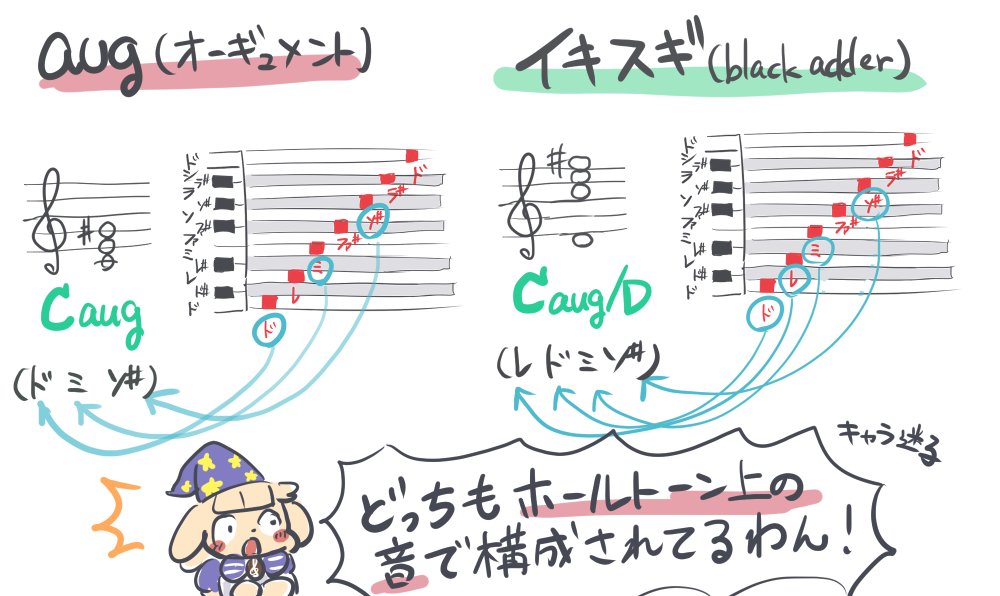OSTER project's Twitter
Translations of tweets from @fuwacina. For an archive of other Vocaloid-related Twitters I no longer keep up with, go here.
December 1st, 2020
I used to only know the whole-tone scale as like, when it was used in a sound effect way for magic being cast, so I never would've thought it was a scale so closely linked to such fancy chords.
This is just me sort of putting together stuff I've noticed making music, so I don't really know the theory stuff, so please take the responsibility upon yourself when looking at it. (crappy music class)
On chord families on whole-tone scales, and applications of 7-5 and slash chords. #RosetChansCrappyMusicClass #TesrosetArt
[Whole-Tone Scales (Roset: "A magical sound!!")
Scales of equal note distances, all one apart. Have an unstable floatiness <3
There's only two kinds: starting with C, and starting with C#.
(Upper scale, starting at C:) C D E F# G# A# C (+2 between each)
(Lower scale, staritng at C#:) C# D# F G A B (easy to understand on a piano roll!!)]
[aug (augment): Caug (C E G#)
Slash chord (black adder): CaugD (D C E G#)
Roset (out of character): "Both of these're built from notes on the whole-tone scale, arf!]
[Seventh Flat Five (7-5): D7-5 (D F# G# C)
This is also built on the whole-tone scale. Roset: "WAON! (dog)" [play on "wan," woof, and "waon," chord]
Using 7-5 Instead of a Slash Chord?!
(Showing C, D, and G# in common between Caug/D and D7-5) The component notes are similar!
Both are chords on the whole-tone scale, so they have similar nuance.
TRY IT!!]
Ah, lots of people are liking it... :heart:
#ItsDecemberSoWhoeverLikesThisWillMakeMeThinkToMyselfAhThatPersonLikedIt


